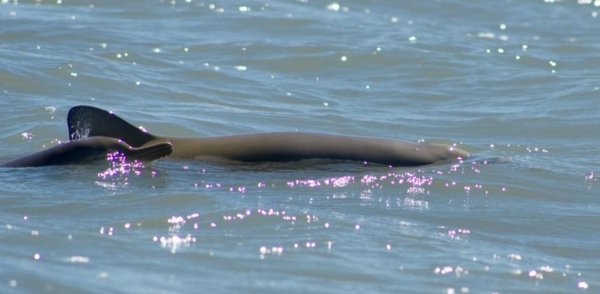The report of the 2023 IWC Scientific Committee Meeting is available now.
The Committee includes world-leading experts in a range of scientific fields related to whales, dolphins and porpoises, known collectively as cetaceans. The purpose of the meeting and subsequent report is to ensure that the Commission is equipped with the latest scientific information when taking decisions related to cetacean management and conservation.
As ever, a diverse array of subjects and disciplines were covered during the two-week meeting. The agenda ranged from chemical and plastic pollution, disease and whale watching to specific regions, species and research tools such as photo-ID.
Some programmes are long-standing and ongoing. They include modelling and assessment work to establish the size, structure and health of cetacean populations. This information is crucial to the Committee and used by all of its groups, providing the foundations for their advice to the Commission. During the meeting, twenty new population estimates were endorsed (including nine for populations of fransiscana dolphins – see below). These will be added to the IWC’s published table of estimates.
A rolling programme to conduct detailed assessments of particular species and regions is another core responsibility of the Committee. This year’s meeting made progress on assessments for North Pacific humpback whales and western North Pacific minke whales.
Ongoing programmes also include reviews focused specifically on populations that are hunted. Commercial whaling has been subject to a moratorium since 1986 but Aboriginal Subsistence Whaling remains an important responsibility of the IWC. This whaling is not conducted for profit but to meet the nutritional and cultural needs of indigenous people, usually in remote, Arctic communities.
Scientific advice on the sustainability of hunt quotas is a vital part of the IWC’s management process and this year, the Committee completed a review for North Atlantic fin whales, relevant to hunts in West Greenland and Iceland.
Another key role of the Committee is to assess threats to cetaceans, and the effectiveness of potential mitigations. Bycatch remains the biggest single threat with more than 300,000 cetaceans estimated to die in fishing gear every year. Results were presented for a range of mitigating measures on trial around the world, from geolocation devices, sound ‘pingers’ and reflective ‘pearls’ to plastic bottles which are attached to nets and act as acoustic reflectors.
The Committee commended a trial on Scotland’s west coast, where creel fisheries are working with scientists, re-rigging fishing gear with sinking groundlines that run along the seabed instead of floating in the water column where they risk entangling cetaceans. Results so far are promising and the proactive involvement of the fishing community was highlighted and welcomed.
The Committee also agreed to embark on the review of several species of South Pacific ‘black fish’ that are subject to intense pressure from bycatch in long-line fisheries. The Committee, regional scientists and Pacific Island governments will consult with the expertise of the Bycatch Expert Panel to best understand the impact and potential mitigations for these offshore species.
An update was also received from the IWC Bycatch Mitigation Initiative, including several collaborations with regional fisheries management organisations, pilot projects, capacity building and development of an IWC ‘library’ of bycatch mitigation and monitoring equipment.
One of many species experiencing sharp population declines, in large part due to bycatch, is the franciscana dolphin which featured in the discussions of several groups at this year’s meeting. The franciscana is already the subject of an IWC Conservation Management Plan. They are found only in coastal waters off Argentina, Brazil and Uruguay and scientists presented the results of recent fieldwork to better understand the size and structure of franciscana populations. The Committee endorsed new population estimates and made a series of recommendations aimed at reducing the impact of human activities, including bycatch, and understanding the cumulative impact of multiple activities.
This Scientific Committee meeting was held in Bled, Slovenia from April 24 – May7. This was a hybrid meeting, the first to include in-person participation since 2019 due to the Covid-19 pandemic. The discussions, conclusions and recommendations agreed at the meeting are contained in the report which is free to access and available here.
Click to access previous reports of the IWC Scientific Committee.

